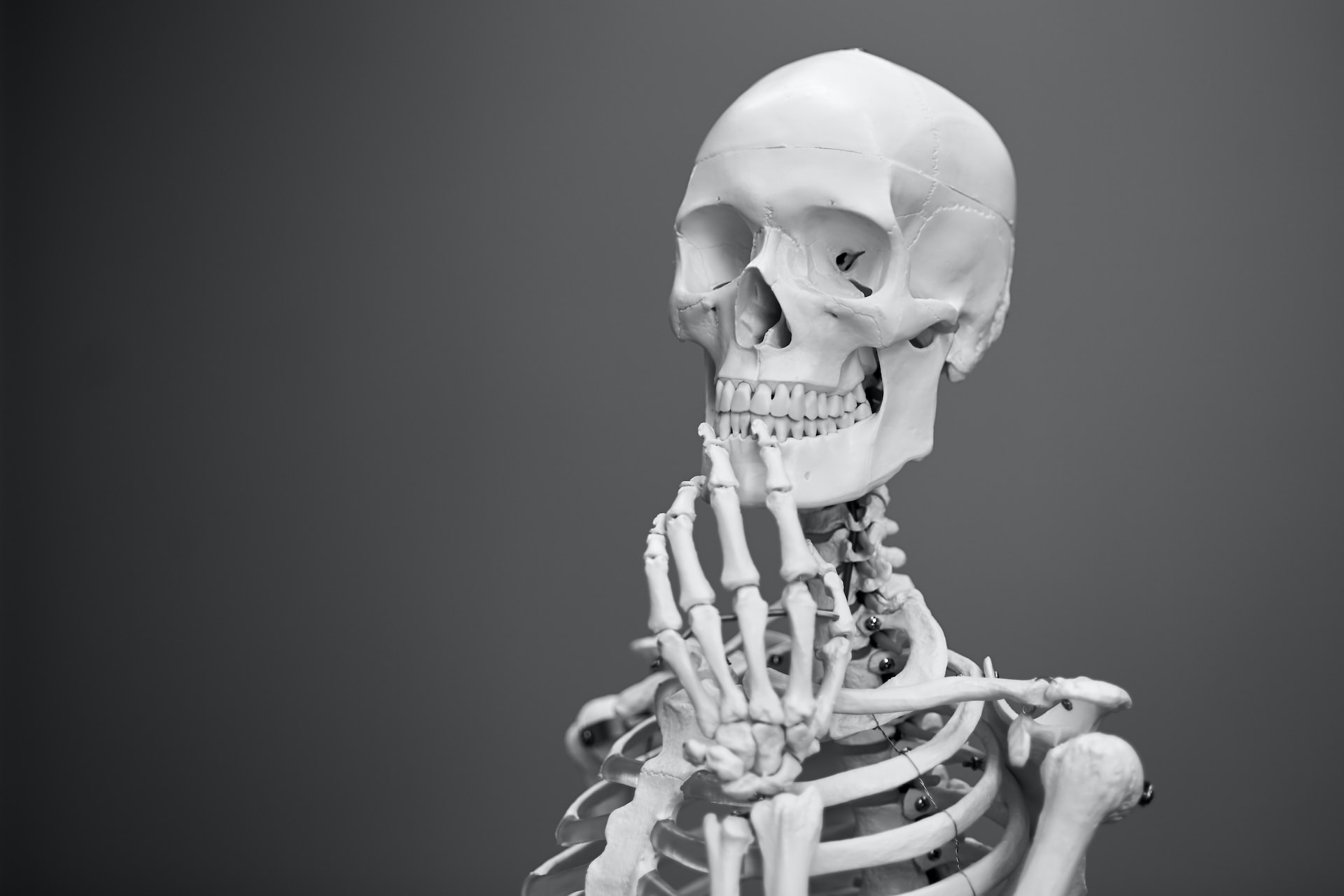
Body + Mind is reader-supported. We may earn an affiliate commission when you buy through some of the links on our site.
You probably don’t give bone health tips much attention, but where would you be without them? Your internal frame is vital to moving you through space and allowing you to do all the activities you love.
However, your bones can lose strength over time, leaving you prone to fractures that take a long time to heal. You can also develop osteoporosis, a condition in which bones become more brittle over time as new growth fails to keep up with a loss. You could find yourself struggling to stand with a crooked spine and “losing” height as you age.
Furthermore, bone problems contribute to chronic pain, which robs far too much joy from life. What can you do to protect yourself? Here are eight bone health tips for a stronger skeleton.
Your first stop on the journey to better bone health entails mindfulness. Evaluating your unique risk factors is only half of this bone health tip. The other is recognizing which ones you can control and taking proactive steps to ensure a stronger skeleton. Risk factors for bone loss include the following:
You can’t do anything about your genes. However, most other risk factors for bone loss remain firmly within your control. Here’s how you can use that knowledge to protect against osteoporosis and fractures.
One of the best bone health tips is to eat a healthy diet. This news probably doesn’t surprise you — it’s an effective method of preventing and treating many chronic diseases. That means your total health benefits. However, let’s take a closer look at the classes of nutrients you need more of to nurture your skeleton.
Unsurprisingly, calcium is vital to bone health. You probably know dairy products are among your best nutrient sources. Your body does absorb nutrients better through food, but milk products aren’t your only options. You can also find plant-based sources of this mineral, like the following:
Your body can’t convert calcium into a usable form without the help of vitamin D. Your body can manufacture this nutrient from the sun, depending on where you live. However, folks above 37 degrees latitude, like much of the United States, should consider a supplement, as your body can’t make enough from the available light, especially in winter.
You typically find this nutrient in foods of animal origin, like fatty fish. However, you can also find foods fortified with it, although vegans and vegetarians are another risk group that should consider supplementation.
In addition to calcium and vitamin D, the following nutrients are essential for bone health:
The best way to ensure you get a healthy amount of each nutrient is to eat a healthy, whole-food diet rich in plant-based materials. Nuts and seeds, for example, are excellent magnesium sources, and most vegetables contain oodles of potassium.
You know about vitamin D supplementation, but what about calcium? This nutrient is tricky, and supplements aren’t for everyone. For example, some people already have too much calcium in their blood, a condition called hypercalcemia. Adding more could cause complications like intestinal polyps.
However, the following people should consider supplementation. Please talk to your doctor first:
What are weight-bearing exercises? They involve your feet, with your skeleton supporting your movement. Examples include walking, low-impact aerobics, kickboxing and dance. However, cycling and swimming don’t count — even in pool walking, the water supports too much of your weight to build bone density.
How much do you need? The World Health Organization recommends moderate activity 30 to 60 minutes per day, so strive for at least a half-hour daily. Please try to be consistent and avoid the “weekend warrior” syndrome, which can increase your risk of injury.
Weight-bearing exercises help your spine but leave some upper-body bones out of the equation. Furthermore, people with conditions such as arthritis might find resistance training with bands and machines more comfortable than walking on a treadmill for a half-hour. Please try to squeeze in at least two to three days of resistance training, more if health conditions make other weight-bearing exercises painful.
Falls are perhaps the top cause of fractures among older adults, and 60% of such accidents take place at home. Your first order of business in fall prevention is to get to work at cleaning up the clutter. Ensure you have adequate space between furnishings, especially if you or someone you love uses assistive devices for mobility.
Furthermore, get plenty of light in your space — otherwise, you could trip over things you can’t see. If you struggle with mobility, consider adding grab bars in places like bathrooms, where falls are more likely to occur.
How do you know if you have a bone density issue lurking inside your body? The miracle of technology, baby. Talk to your doctor about having a DEXA scan, a special x-ray that evaluates your bone health risks. Many doctors recommend them for women beginning in menopause and men starting at age 65.
Your final bone health tip depends on the results of your DEXA scan. Your doctor may recommend medication to prevent further loss. These include the following prescriptions:
Additionally, your doctor may recommend hormonal treatments, particularly in post-menopausal women. Replacing your estrogen can help maintain bone strength.
You might not pay much attention to your skeleton. However, it would help if you had it to help you move through life.
Follow these eight bone health tips to preserve your frame as you age. You’ll enjoy a healthier, pain-free and active experience as you grow older.
Your email address will only be used to send you our newsletter, and at any time you may unsubscribe. For more information, see our Privacy Policy.